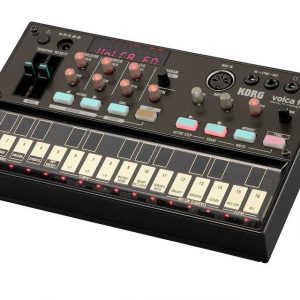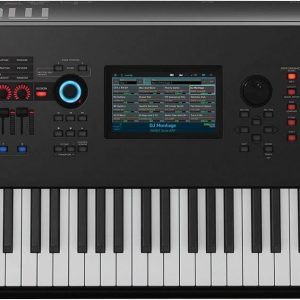Description
Dreadbox Typhon Synthesizer: A Powerhouse Analog Synth
Dreadbox, the Greek-based synth company, has been making some of the best analog synthesizers in the market since 2012. In 2020, the brand delivered yet another impressive synth, the Dreadbox Typhon. This synth features a unique design and a powerful sound engine, packing an impressive number of features into a compact package.
Design and Build
The Dreadbox Typhon has an attractive design featuring a slim, ergonomic form factor, which makes it easy to transport, and an orange and black color scheme that stands out on stage and in the studio. The synth also features a 256 x 64 OLED screen, which provides a clear and detailed view of the internal parameters.
The build quality of the Typhon is solid, with a metal case and high-quality knobs and buttons. All the knobs and buttons on the synth have a smooth feel to them and are easy to use, ensuring that operation is user-friendly.
Sound Engine
The Dreadbox Typhon is an analog synth that uses a combination of digital and analog circuitry to produce its sound. It comes with two Dreadbox analog oscillators, three independent analog filter types, and analog drive and distortion circuits.
What sets the Typhon apart is its ability to produce a wide variety of sonic textures, ranging from classic analog sounds to more experimental, complex tones. The synth also features a polyphonic sequencer that can trigger notes, control parameters, and sequence modulation sources, making it an incredibly versatile instrument for live performances or studio sessions.
Other Features
Besides the sound engine and the sequencer, the Typhon features a range of other useful features such as a built-in effects processor, a MIDI in/out, and USB connectivity. The effects processor includes six different effects, including delay, reverb, and phaser, which can be applied individually or together to create lush, complex soundscapes.
Conclusion
The Dreadbox Typhon is a remarkable analog synthesizer that punches above its weight. Its impressive sound engine, sequencer, and effects processors make it an incredibly versatile instrument that can handle a wide range of musical styles. The build quality and user-friendly interface make it an attractive option for synth enthusiasts.
Whether you’re a professional musician or a hobbyist, the Dreadbox Typhon is worth considering as your next synth purchase. It’s a powerful machine that delivers a broad range of sounds and features in an ergonomic, portable package. Overall, the Dreadbox Typhon is an excellent addition to any synth enthusiast’s collection.
Dreadbox Typhon properties
| Product name | Dreadbox Typhon |
| Brand | Dreadbox |
| Type | Synthesizers |
| Keys | No |
| Drawbars/Sliders | Yes |
| Pads | No |
| Rotary Controls | Yes |
| Modulation Wheel | No |
| Pre-Programmed Rythms | No |
| Pre-Programmed Songs | No |
| Pre-Programmed Sounds | Yes |
| Pre-Programmed Drumset | No |
| Pre-Programmed Effects | Yes |
| Built-In Tuner | No |
| Portable | Yes |
| Speakers | No |
| Connections | 3.5mm (AUX), 6.3mm (1/4″RTS), Headphone, MIDI |
| Colour | Black |
| Power Supply | USB |








Reviews
There are no reviews yet.